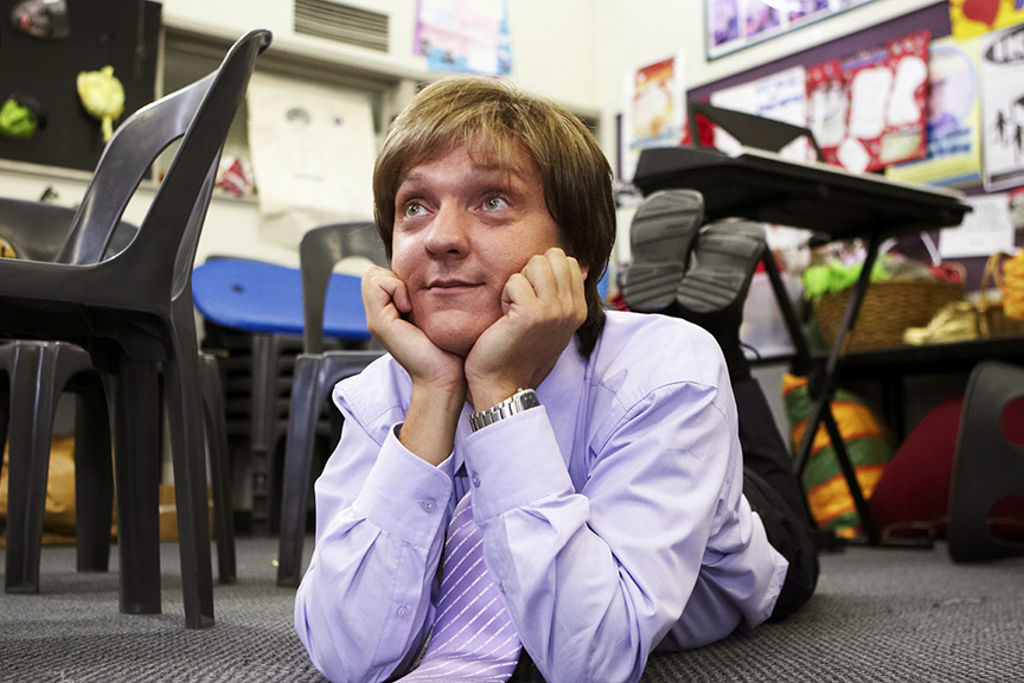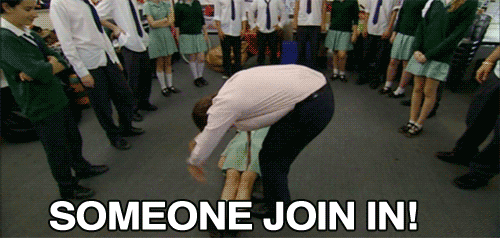Junk Explained: What The Gonski Just Happened?
A pun-free and GIF-filled guide to what the Gonski reforms are, where they went, and why they’re back.

In 2010, the Gillard government decided that education quality and funding models in this country were a mess.
David Gonski and a crack team of people with letters after their names took 20 months to read 7000 submissions and make 41 recommendations about how to deliver better schools for Australia.
What Is A Gonski And Does It Pair Well With Riesling?
In Australia, the Federal Government has primary responsibility for funding private, independent and Catholic schools, while state governments play sugardaddy to the public schools. The report said different things about each system, and you can read the whole thing if you like — but here’s a basic run-down.
Gonski on Public Schools:
The Gonski report found coast-to-coast discrepancies about how state governments were funding their public schools; some states like iron ore, some states like bananas, some states like doing well in tests. Part of the mess was that there were two ways to fund schools: you could give a big whack of cash to a school and let them work it out (Victoria and South Australia), or you could hand out teachers and books (Northern Territory and ACT). Different states also disagreed about what was meant by “need” — as in the sentence, “who needs this roll of cash the most?”.
To solve these problems, Gonski recommended an injection of more money — like Jay-Z’s-drunk-in-the-club levels of money — and said that the Federal Government should take a bigger role in funding public schools. In order to work out how much money each school should get, they recommended that the Government create a benchmark of what it cost to educate a child, multiply that figure by the number of students, and calibrate for socio-economic status. That amount would then be funded entirely by a combination of federal and state money.
Here’s a tool that lets you see what your local public school stood to get from Gonski.
Stay with it. We’re just getting started.

Gonski on Non-Government Schools:
First thing’s first: non-government school doesn’t mean non-government money.
From 2009 to 2012, Gonski found that non-government schools got $36 billion from the federal government. A real sentence contained in the report is this: “The Australian Government is currently the primary public funder of non-government schools.” Hear that? The government funds non-government schools. That’s like if Messina funded non-Messina ice cream, only not at all like that because education is a public service and ice cream is not.
The Gonski report found a bunch of things wrong with how we fund non-government schools.
Until now, how much each non-government school gets has been determined by a socio-economic status (SES) check of the postcodes in which its students live. This system was introduced in 2001 by the Howard government. But since everybody knows a rare form of karmic scoliosis instantly cripples any politician who suggests a school might lose a dollar, Howard introduced a caveat called “funding maintained”, which meant that even if the SES test suggested a school received too much government funding, they wouldn’t actually lose any of it.
So somehow we have all been living in a country where the The King’s School in Paramatta gets a whopping $4000 per student from the Government, while charging $27000 per year of day-boy education.

Remember how, in order to fund public schools, we needed to work out how much it costs to educate a child, and then tweak it a bit for the number of students and their socio-economic status? The report recommended that we do the same thing for non-government schools, only instead of writing a cheque for the resultant amount, we means test parents to work out how much of it they could pay for, and then fund a reasonable proportion (but, because politics is politics, guarantee a base-level funding rate of 20%).
Tim Hawkes, the principal of the King’s School, described this as a “fiscal raid on well-resourced schools“.
What Did Gillard Do?
In 2013, the then-Prime Minister Julia Gillard brought in legislation that would realise most of the Gonski report’s recommendations. Her Federal Government promised $14.5 billion in funding for both government and non-government schools, and created the educate-a-kid funding benchmark we’ve been talking about: $9 271 for primary and $12 193 for secondary. (Fencing, oboe lessons and side salads cost extra.)
But Gonski contained recommendations that the required federal and state action, so the Commonwealth had to work with the states to get the whole package through. They did this by offering to chip in as long as the state would contribute as well.

June 30 this year was set as the deadline for the states to sign up. Kevin Rudd resumed the leadership of the Labor Party on June 26 and continued negotiations, until in the end everyone except Queensland, WA and the NT had signed up.
Did Abbott Promise To Honour The Deals?
It depends how you define “promise”.
A week before polling day, would-be Education Minister Christopher Pyne said, “you can vote Liberal or Labor and you’ll get exactly the same amount of funding for your school.”
In August, Prime Minister Tony Abbott said that he would “end uncertainty by guaranteeing that no school will be worse off over the forward estimates period”.
Tony Abbott has also been quoted saying “as far as school funding is concerned, Kevin Rudd and I are on a unity ticket”.
And an August press release from Christopher Pyne’s office said, “Every single school in Australia will receive, dollar for dollar, the same federal funding over the next four years whether there is a Liberal or Labor Government after September 7.”
So yep, that’s pretty clear then.

So Why Did The Coalition Reject Gonski?
Last Tuesday, Pyne announced that the Gonski reforms would only be adhered to for 2014, after which the Government would renegotiate funding to a level he described as “flatter, simpler and fairer”.
Flatter, like our understanding of the world before the Copernican model.
Pyne called the existing arrangement a “shambles”, and concluded that “common sense tells me that we have to have a new funding model beginning in 2015”. One of his main reasons, aside from this “common sense”, was the “revelation that the previous government … cut $1.2 billion from the school funding envelope for the next four years”.
$1.2 Billion Does Sound Like A Lot Of Money…
It is exactly 1.2 billion $1 cheeseburgers, yes. If Pyne is right, and Labor documents reveal a $1.2 billion “cut” to Australian schools, that would both suck and seem contrary to the spirit of the Gonski reforms.
But let’s go back to the figures.
The Labor Government’s 2013 Economic Statement marks payments for states who weren’t yet signed up to Gonski as “not for publication” or “nfp”.

Fortunately for us, the Government had to release more costings just before the election.
Here’s what the pre-election economic and fiscal outlook says about the Gonski legislation, referred to in Laborese as the “Better Schools Plan”.

What this means is that the Gillard/Rudd hybrid had put aside some money assuming that the three remaining states would eventually come on board.
And if you add up all the amounts between now and 2017, you get $1.2 billion.
So what Pyne called a $1.2 billion “cut” wasn’t actually a cut: it was an amount earmarked for the three remaining states, that hadn’t been implemented yet.

–
… And Now We’re Back To Gonski.
People turned out to be unhappy with Abbott’s decision to scrap the Better Schools Plan after one year; even fellow Liberal, NSW Premier Barry O’Farrell, said that the Government had to “stop behaving like an opposition”, and Gonski Panel member Kathryn Greiner described the decision as “a tragedy”.
So yesterday, Abbott’s Government announced that they had secured in-principle agreements with the remaining three states, and would be returning to a system of funding that is broadly in keeping with the Gonski recommendations.
The Government also announced it would be injecting funds into education to finance the deals with the last three states. How much money? $1.2 billion.
Opposition Leader Bill Shorten had come to Question Time yesterday prepared for a session on dishonesty and promise-keeping. What he got instead was “Billion-Dollar Bill” added to his ever-growing list of monikers – which Pyne had already expanded on Wednesday to include “Short Change Shorten”. All because of this $1.2 billion cut which wasn’t even a cut.
In keeping with the primary-education theme of the days’ events, Shorten later called Mr Pyne a “Well known education reformer – NOT!”

–
Eleanor Gordon-Smith studies at the University of Sydney, debates internationally for Australia, and ate a scorpion one time; she edited the student magazine BULL in 2013.